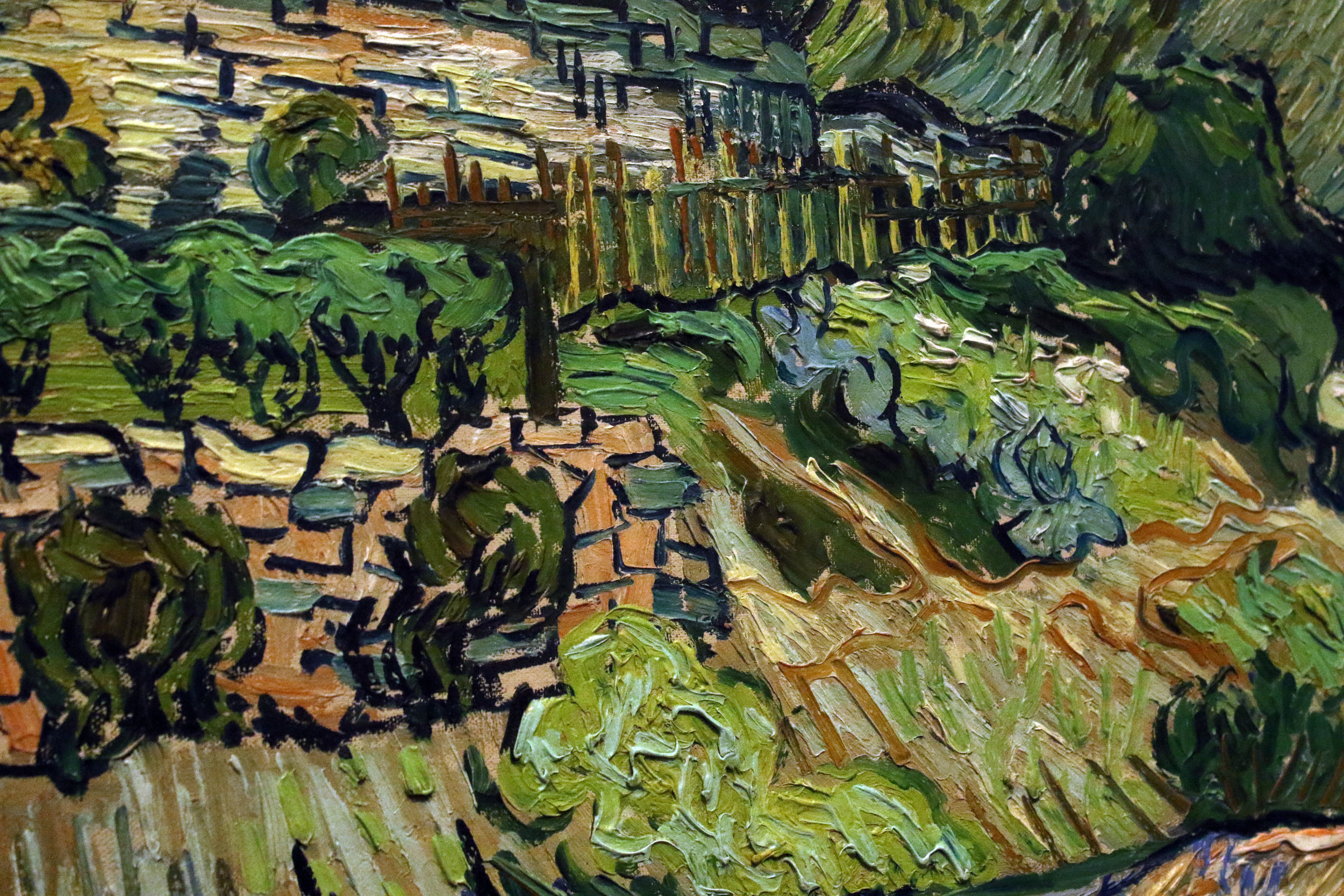Camp & Draw: Plein-air Painting
By Savannah Troy
Vincent van Gogh was one of the most iconic artists in human history. His thickly colorful, post-impressionistic landscapes are known and appreciated worldwide for their vibrant interpretation of the natural world. Van Gogh frequently painted “en plein air” (literally translated as “in the open air”) and generated dozens of beautiful landscape paintings as a result. However, it is believed that he suffered from chronic sunstroke due to the exposure from painting out of doors. I personally cannot recommend risking your physical health, even for the magnificent results of plein air painting and have thus compiled some tips to get your landscape fix in a safe and efficient way.
Detail shot of one of Van Gogh's paintings on display at the Musee d'Orsay
Be aware of your environment. If you are painting in high elevation, know the importance of always having water on hand. Plan on having one liter of water for every two hours you will spend outside painting. Additionally, the sun is much more intense at high elevation than at sea level, and you should wear a wide-brim hat or set up in the shade.
Expect your paints to behave differently when out in the open air. If you are painting in a particularly dry environment (high elevation or arid regions), your paints will dry up much faster than normal. I try to avoid wasting paint by squeezing out about a quarter of what I would normally start with, because otherwise it won’t get used up before it dries on your palette. This is especially noticeable with acrylic paints but is less of an issue with oils.
Pack smart. Try small-scale painting or drawing in a sketchbook (gouache or watercolor are very convenient travel-sized paints). However, if you’d like to paint a full canvas and pack out all your acrylics and brushes, you’ll need the right container. There are lots of portable easels available for purchase that have storage space for your equipment. I recommend checking out Jerry’s Artarama for good deals on art supplies, including easels. You should also remember to pack for yourself- bring snacks, water, and your standard hiking gear.
Be prepared for unfavorable conditions. Even if the weather is perfect, the lighting will change constantly. The wind may blow bugs and leaves into your paint and on your canvas, and the rains may shut you down completely. These are complications that studio painting does not have. They are surmountable, though- it just requires a little mental fortitude, a lot of sunscreen, and a pivot or two.
Another detail shot of one of Van Gogh's paintings
Best of luck-- please avoid sunstroke and keep both of your ears firmly attached.


